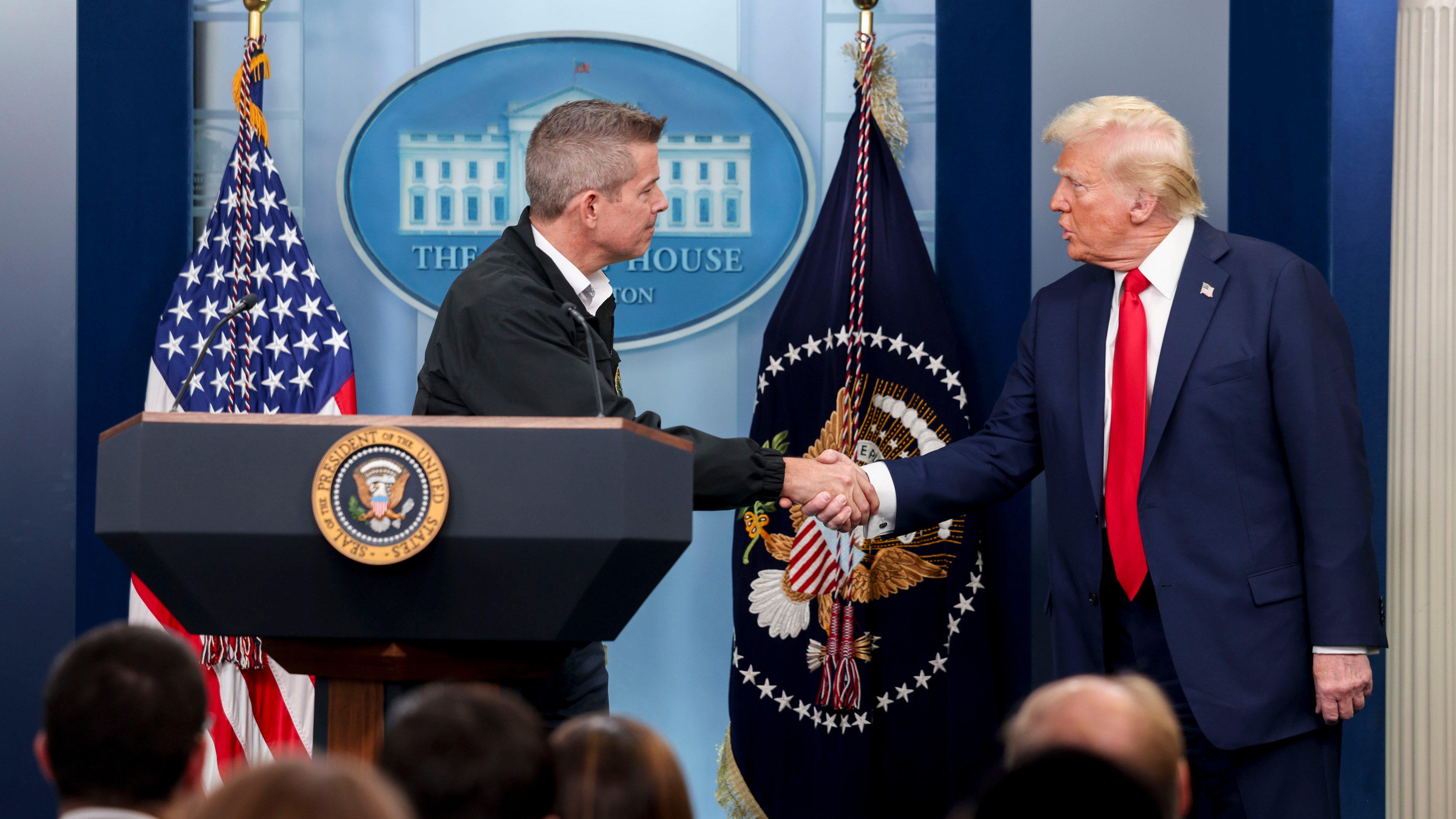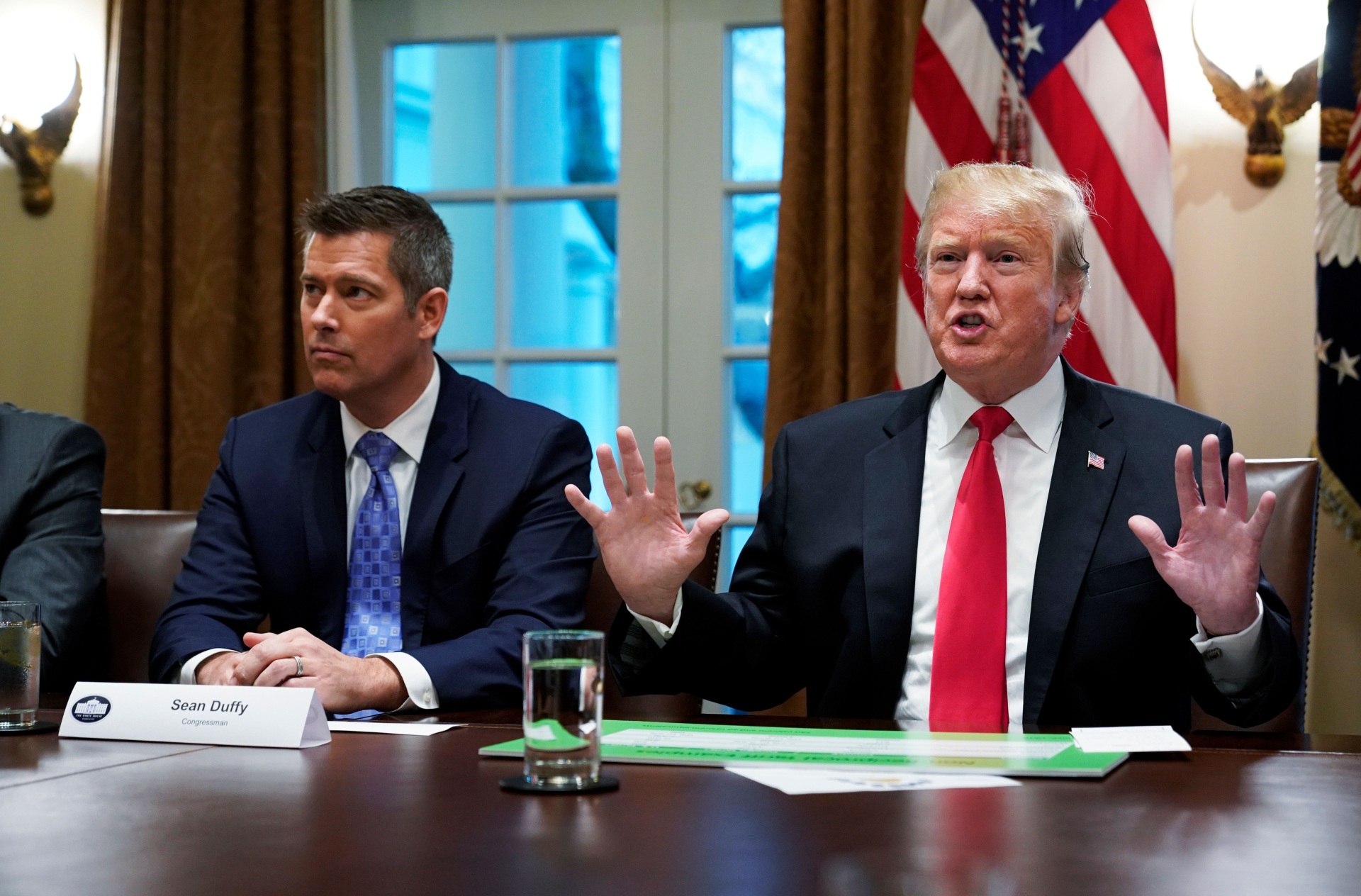Trump signs executive order to boost commercial space — and shift NASA's balance of power
"This reckless order puts people and wildlife at risk from private companies launching giant rockets that often explode and wreak devastation on surrounding areas,"

President Trump signed a new executive order Wednesday (Aug. 13) aimed at accelerating U.S. commercial space activity by slashing what are described as regulatory delays and expanding the nation's launch infrastructure.
The order, "Enabling Competition in the Commercial Space Industry," directs multiple federal agencies to streamline launch licensing, fast-track spaceport construction and better support emerging in-space industries.
Transportation Secretary and acting NASA Administrator Sean Duffy joined Trump during the signing, calling it a pivotal move to "unleash the next wave of innovation" and secure long-term American leadership in orbit, but the order also hands more authority to politically appointed roles outside the space agency's jurisdiction.
The directive calls on the Department of Transportation to simplify how launch and reentry approvals are handled, with a focus on shortening environmental reviews that have bottlenecked rocket development schedules in the past. It also pushes agencies to clear what is described as redundant permitting steps to more quickly greenlight new spaceport construction — especially in cases where multiple federal offices are involved.
Under the order, a streamlined approval system will be created for emerging space technologies like orbital refueling and manufacturing in microgravity, encouraging rapid growth for "novel space activities" in untapped sectors.
To back the push, the White House is reshaping or adding leadership roles across multiple agencies, though none are inside NASA. They include a senior advisor on commercial space to the Department of Transportation, upgrading the FAA's commercial space chief to a politically appointed senior position, and elevating the Office of Space Commerce to sit directly within the Office of the Commerce Secretary, strengthening the department's voice in shaping national space policy.
Under the new framework, NASA, DOT, the Office of Space Commerce and the Department of Defense are expected to streamline their combined review processes, and ensure they aren't stepping on each other's toes when it comes to launch and infrastructure oversight.
Breaking space news, the latest updates on rocket launches, skywatching events and more!
The order also takes aim at state-level environmental roadblocks, and how the Coastal Zone Management Act may be interfering with commercial spaceport projects, such as SpaceX's Starbase launch site for the company's Starship rocket being developed on the coastal tip of southern Texas. Environmental advocacy groups have raised repeated alarms over the potential harm the SpaceX facility may cause the local ecosystem.
But government officials stress that the directive won't cause any harm. "This order safely removes regulatory barriers so that U.S. companies can dominate commercial space activities," FAA Administrator Bryan Bedford said in a statement.
Jared Margolis, senior attorney for the Center for Biological Diversity, disagrees. "This reckless order puts people and wildlife at risk from private companies launching giant rockets that often explode and wreak devastation on surrounding areas," he said in a statement issued on Aug. 14. "Bending the knee to powerful corporations by allowing federal agencies to ignore bedrock environmental laws is incredibly dangerous and puts all of us in harm's way. This is clearly not in the public interest."
NASA is named throughout the order, but mostly as a coordinating agency rather than a lead. It's tasked with the same directive to streamline reviews and evaluate paths to faster innovation, but isn't granted any new authority.
Duffy said the move will support NASA's work with commercial providers and improve access to launch infrastructure. But in practice, it seems more regulatory weight is being shifted to DOT, Office of Space Commerce and FAA.
The order reflects a growing trend of divestments and sweeping changes in arguably one of the most recognizable government agencies in the world. As space policy and licensing are rerouted to outside departments, NASA is also facing the largest budget cut in its history.
The executive order signals a continued move toward commercially-led space development, with new power centers emerging beyond NASA's control. Supporters see it as a chance to speed up innovation and clear the path for greater momentum in the private sector.
Varda Space Industries, a private in-space manufacturing startup, for example, encountered major delays with the return of its first reentry capsule to U.S. soil last year. The vehicle remained in orbit for months while the company awaited FAA approval — a holdup that underscored how drawn-out licensing timelines can stall even relatively small-scale commercial missions.
However, critics warn moves like this executive order could weaken NASA's authority and shift national priorities toward market-driven objectives over science and exploration. With key decisions now moving to DOT and the Office of Space Commerce, the order raises questions about how space priorities will be set — and who gets the final say when innovation and oversight collide.

Josh Dinner is the Staff Writer for Spaceflight at Space.com. He is a writer and photographer with a passion for science and space exploration, and has been working the space beat since 2016. Josh has covered the evolution of NASA's commercial spaceflight partnerships and crewed missions from the Space Coast, as well as NASA science missions and more. He also enjoys building 1:144-scale model rockets and human-flown spacecraft. Find some of Josh's launch photography on Instagram and his website, and follow him on X, where he mostly posts in haiku.
You must confirm your public display name before commenting
Please logout and then login again, you will then be prompted to enter your display name.

